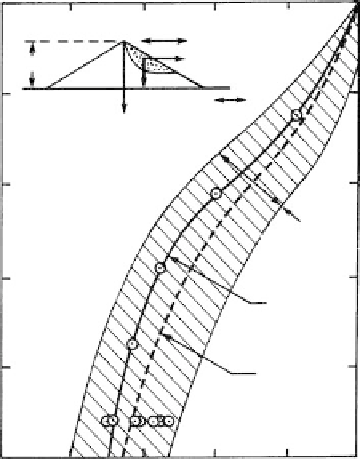Environmental Engineering Reference
In-Depth Information
0
ü
kw
h
w
0.2
ü
g
y
0.4
“Shear Slice”
(range for all data)
0.6
F.E. Method
0.8
Average of
all data
1.0
0
0.2
0.4
0.6
0.8
1.0
k
max
/ü
max
Figure 12.37.
Variation of seismic coefficient k
max
with depth of the base of the potential sliding
(Makdisi and Seed, 1978, reproduced with permission of ASCE).
and Makdisi and Seed (1978)). It is generally found that, provided the yield acceleration
is accurately evaluated, the approach can estimate the permanent displacement of a soil
mass in reasonably good agreement with those observed during past earthquakes.
It is also stressed that Newmark's approach is limited in application to compacted
clayey embankments and dry or dense cohesionless soils that experience very little reduc-
tion in strength due to cyclic loading. The approach should not be applied where embank-
ments or their foundations are susceptible to liquefaction or strain weakening because it
will significantly underestimate displacements.
12.6.3.4
Makdisi and Seed (1978) analysis
The Makdisi and Seed (1978) approach is based on Newmark's method, but modified to
allow for the dynamic response of the embankment as proposed by Seed and Martin
(1966). The approach was developed from a series of deformation analyses performed on
a large number of embankments subjected to earthquake loading.
The approach involves the following main steps:
(a) Determine y/h ratio for the potential sliding mass, where y is the depth to the base of
the sliding mass and h is the embankment height;
(b) Calculate the yield acceleration k
y
for the potential sliding mass;
(c) Determine the maximum crest acceleration ü
max
and the predominant period of the
embankment T
o
(in seconds);
(d) Determine the maximum value of the acceleration history k
max
using the normalized
relationship given in Figure 12.37 and the values calculated in steps (a) and (c);
zontal component of earthquake induced permanent displacement, U, in the potential
sliding mass;


